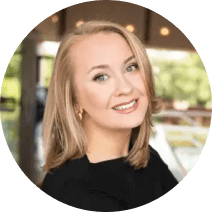When David Lewis, Founder & CEO of Rocky Mountain Assisted Living, began his entrepreneurial journey, he faced numerous challenges. Crafting a business plan that aligned with his vision was one of them.
Actually, I recently talked to David about his personal experience starting an assisted living facility.
He shared what it takes to create a plan and how he overcame challenges along the way.
From that conversation, I’ve compiled this guide to help you create a solid residential assisted living business plan that makes a difference—just like David did.
What is a residential assisted living business plan?
A residential assisted living business plan is a professionally-written document that offers a strong basis for starting and developing your assisted living home.
It encompasses an overview of your business vision, goals, services provided, marketing strategies, and finances—all in a clear and well-organized manner.
Simply put, it acts as a strategic guide to stay organized, adapt to challenges, and ensure steady growth.
Why do you need a residential assisted living business plan?
A business plan is key to running a successful residential assisted living facility. It clearly defines your goals and strategies as well as gives you a strategic roadmap to follow.
Here's why a business plan is important:
- Set clear goals: Shows what you want to achieve and how to reach those goals.
- Secure funding: Helps you attract investors and get required funding or capital investment.
- Manage operations: Lets you organize daily tasks while staying on track.
- Helps overcome challenges: Prepares you for potential risks or challenges and enables you to develop mitigation strategies.
In short, keeping a good business plan guides you in the right direction and sets your facility up for success in a competitive market.
How to write a business plan for your assisted living business?
When drafting a business plan for a residential assisted living business, it’s very important to focus on key components to clearly communicate your vision and strategy.
Here's a simple guide to help you write an effective business plan:

1. Executive summary
The executive summary is the first section of your business plan that gives a quick, concise overview of your residential assisted living business.
It’s more convenient to write the executive summary section at last, after completing the other sections of your plan. This way, you can easily summarize the main points.
Here's what to include in this section:
- Your business name and location
- Vision and goals of your facility
- Services you’ll offer to residents
- Opportunities in the market
- Your marketing strategies
- Financial projections outlook
This section acts as a short pitch for your business, designed to grab the attention of potential investors and convince them to support your idea. So, keep it simple, concise, and compelling.
"Writing the executive summary was challenging because it meant condensing the entire vision of my facility into just a few lines.
Initially, it was hard to strike the right balance between being clear and concise while showcasing the key aspects of our business.
But after reviewing the market trends and refining our mission, I found the words to express our commitment to quality senior care and the growing demand for such services.
It was rewarding to finally have a summary that effectively conveyed the potential of our facility." — David Lewis
2. Business overview
This section is where you’ll dive deeper into your residential assisted living business. It clearly explains the foundational facts and structural aspects of your business.
This will help readers truly understand what your business is all about. Keep it clear and purposeful, setting a strong foundation for the rest of your business plan.
While writing your business description, consider including these elements:
- The concept of your assisted living facility
- Your vision and mission statement
- The legal structure (LLC, corporation, or partnership)
- The owner or key partners
- A brief background history of the business
- Short-term goals and long-term objectives
Overall, this section gives an in-depth overview of your business and highlights what makes it unique.
"At first, figuring out how to describe our business clearly was tough. I struggled to pinpoint exactly what made our assisted living facility different and how I wanted to structure everything.
But once I nailed down our vision, mission, and commitment to personalized care, things really clicked.
Understanding our business structure and setting both short- and long-term goals gave me the strong foundation I needed to move forward." — David Lewis
3. Market analysis
Market research provides valuable insights into your target market, customer segments, emerging trends in the industry, and key competitors.
A thorough market analysis will show potential investors that you know the environment in which your assisted living facility will operate. This will further help you position your business effectively.
To plan this section, consider answering the following questions:
- How big is the assisted living market in your area or region?
- Is your market growing, stable, or declining?
- Who are your target customers? Seniors in need of assistance? Families looking for care options?
- Who are your main competitors? Other assisted living facilities in your area?
- What makes your facility stand out?
Additionally, create a buyer persona profile that helps you better understand the ideal customer’s preferences and needs. This will enable you to tailor your assisted living services and marketing efforts accordingly.

While developing this section, pay extra attention to highlighting your competitive advantages. Understanding these factors helps you in your business growth and success.
"Conducting a market analysis was challenging, given the need for detailed industry analysis and understanding of market trends.
Identifying the unmet demand for memory care services and showcasing the growing senior population in our area solidified our confidence in entering this market.
This reassured me of the potential for a thriving assisted living business." — David Lewis
4. Services offered
Now, outline the services your residential assisted living business will provide and what sets them apart.
When drafting, consider including these key points:
- Services offered: List main services like personal care, memory care, and medication management.
- What sets them apart: Highlight what makes your services unique, such as specialized care, 24/7 support, or personalized care plans.
- Pricing: Explain how you’ll charge—by room size, level of care, or package deals.
- Delivery: Share how you’ll ensure quality, including skilled staff and care routines.
- Future plans: Mention any future services, such as respite care or transportation.
If you offer unique features, like custom care plans or a focus on family involvement, highlight them to show how they meet client needs and make your business stand out.
"Initially, organizing and defining the services we would offer was very tough. It was important to convey how our personalized care and specialized services would address specific resident needs.
By focusing on essential services like medication management and tailored personal care plans, I was able to outline what made our offerings unique and more appealing compared to others in the area." — David Lewis
5. Marketing plan
Your marketing plan outlines how you’ll attract new customers and retain existing clients while growing your residential assisted living business.
So, outline all the marketing tactics and sales strategies you’re going to use to promote your assisted living facility. Here are a few methods you may consider:
- Online marketing through social media platforms to build an online community, share valuable content, and reach families looking for care services.
- Offline advertising like local ads, flyers, and attending or hosting community events to raise awareness in your neighborhood.
- Partnerships with local doctors, hospitals, and healthcare professionals for consistent client referrals and collaborative care efforts.
- Incentive offerings or discounts for new residents, helping families choose your facility over others.
- Referral programs where current residents and their families can earn rewards for recommending your services to others.
A strong marketing strategy will help attract clients, build relationships, and demonstrate growth to investors, ensuring long-term success.
"Crafting the marketing plan was challenging due to the numerous strategies available.
By focusing on social media marketing, partnerships with local healthcare providers, and hosting community events, we created an impactful plan to attract our target audience.
Seeing this clear roadmap gave me confidence in our approach to growing our assisted living community." — David Lewis
6. Management team
This is the section where you will present the key players that will run your residential assisted living business. These could be just you or a small team.
A strong management team is crucial, as investors need confidence that your business is in capable hands and led toward success.
Begin with a brief introduction about yourself. Highlight your background, like your education, experience in this assisted living industry, and relevant skills that showcase your ability to run a business.
If you have a small team of nurses, senior citizens’ specialist doctors, or housekeeping staff, introduce them as well. Describe their roles, responsibilities, and how they can contribute to your business’ success.
In addition to that, include an organizational chart that depicts reporting lines and how responsibilities are taken. For example:

If applicable, mention advisory board members, external advisors like, health professionals or elderly care experts who help grow your business.
"Putting together our management team section wasn’t easy at first. It was a challenge to figure out how to showcase the combined experience of everyone involved.
Once I focused on how the team’s expertise, like that of our senior care specialists, aligned with our mission, and added the organizational chart, I could clearly highlight our capability to run a thriving assisted living facility." — David Lewis
7. Operations plan
The operations plan will detail how your residential assisted living business will run on a daily basis. This will give readers a better understanding of all your business operational intricacies.
The following are a few essential details to include in this operational business plan section:
- Daily operations
- Staffing and training
- Technology or tools used
- Legal compliance
- Resource management
By covering these areas, you’ll show investors that you’ve thought through all the practical aspects of running the facility efficiently while providing the best care to your residents.
"Detailing the operations plan required considering every aspect of daily operations, from staffing and training to ensuring compliance with industry standards.
Breaking it down into these specific sections helped create an actionable plan that inspires confidence in our ability to run a high-quality assisted living facility business." — David Lewis
8. Financial plan
Your financial plan for the residential assisted living business is critical for securing investors and ensuring long-term sustainability and growth. It clearly shows how your business will generate income while managing expenses over time.
The financial plan developed for an assisted living facility provides comprehensive projections on revenues, costs, and profits for the first 3 to 5 years.
Here are the essential financial statements and reports to include:
- Income statement (profit and loss statement)
- Cash flow statement
- Break-even analysis
- Balance sheet
- Funding requirements
- Risk management plan
In addition, provide approximate figures for your start-up costs and revenue projections as well as how you plan to raise funds.
A comprehensive financial plan will assure investors that you have a clear, well-structured strategy to achieve revenue goals and maintain profitability.
"Financial planning was the most intimidating part initially. Projecting financial projections such as income statements, cash flow statements, and startup costs seemed complex.
But through precise planning and conducting a break-even analysis, I gained a solid understanding of when our business would become profitable.
This process gave me confidence in our financial plan and ability to raise capital for a thriving assisted living business." — David Lewis
Download now residential assisted living business plan template
Ready to start drafting your residential assisted living business plan but need extra help with that? We’ve got you covered! Download our residential assisted living business plan template to get started.
This investor-friendly template has helped hundreds of assisted-living business owners create successful plans. With clear examples and tips, it also helps you ease your business plan writing process.
Conclusion
Now that you've explored the guide and a free template, it should be easier for you to create a residential assisted living business plan.
If you’re still unsure about details or looking for professional guidance, consider reaching out to our business plan consultants. Our team of experts will help you refine your plan and ensure it covers all the essential elements that investors want to see.
So, why wait? Get a quote today!

